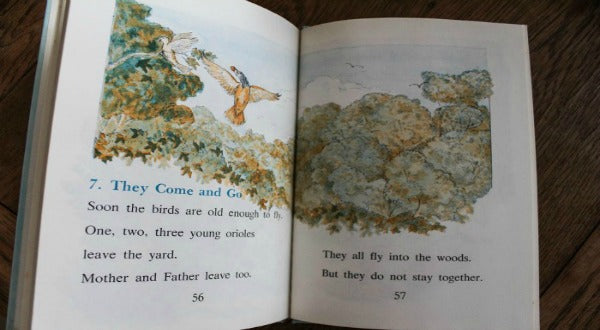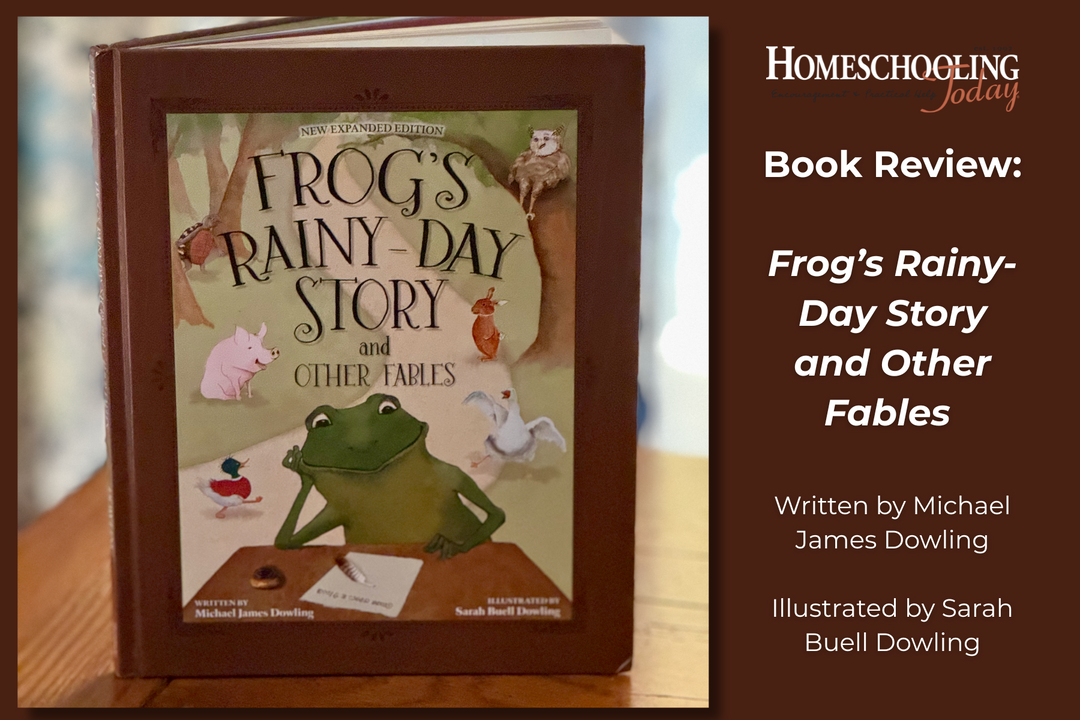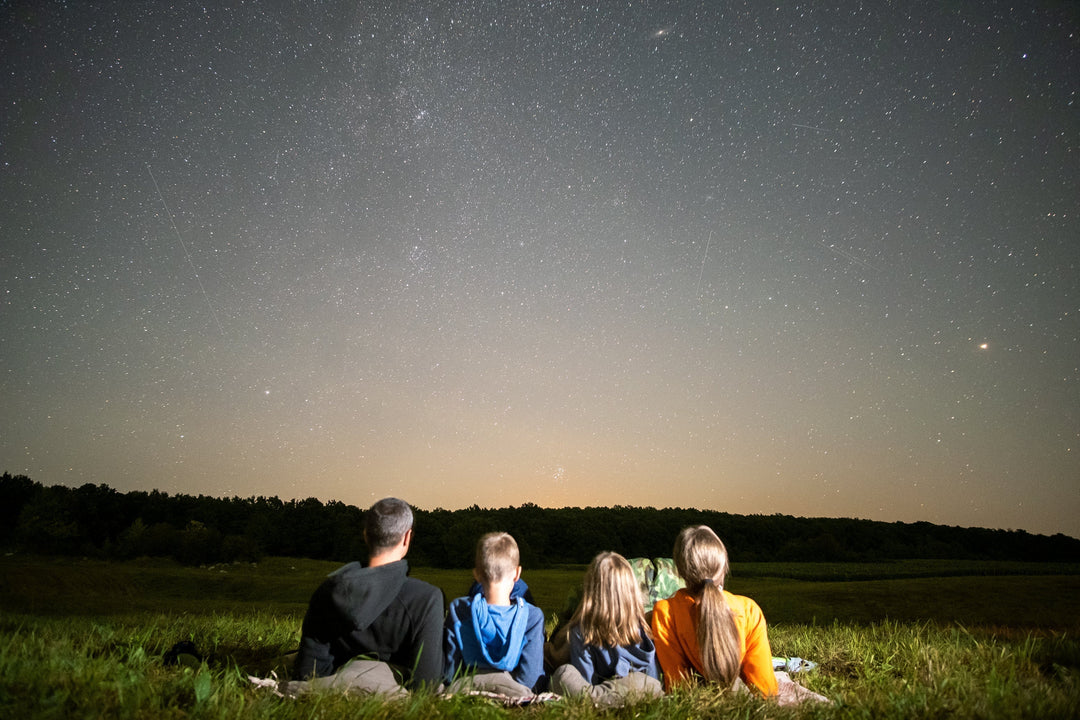Literature Inspired Bird Study For Young Learners

Apple trees bloom. A bright orange and black bird flies near, hovering over blossoms. Singing, he attracts a female. The Baltimore orioles are nesting, weaving soft grasses, dry plants, and bits of string with their beaks. Soon, a soft nest hangs in a maple tree. Mother oriole, pale orange and olive green, lays four brown-spotted eggs and keeps them warm until they hatch.
Baltimore Orioles by Barbara Brenner invites the reader to venture to and from a nest, overcome the dangers of cat and crow, and launch young birds as they set off through the seasons, migrating south, and later returning to build their own nests.
Other wonderful children's books can inspire and inform young learners. Study birds and read about them along the way.



Watch the Birds
Bird species vary. Observe birds while on a picnic blanket by a pond or relaxing on a chair in your backyard. As birds fly in and out of your view, observe God’s creativity in color and feather patterns. Notice how birds behave differently. Do they stand tall or crouch low? Are they eating bugs or fish? If a male and female are working together, notice the color of their feathers. Are they the same or different? Are the birds the same size? Listen for bird calls and songs, or visit All About Birds to learn how to ID bird calls. Related post: Spring Bird JournalsNotice Beaks
As you bird watch, notice the similarities and differences in bird beaks. If you are near water, watch water birds swoop, dive, and eat their food. Mallard ducks tip up, submerging their heads to reach food underwater. Spoonbills scoop food with a spoon-shaped bill. Read Unbeatable Beaks by Stephen R. Swinburne. How is each bird suited for the location in which it lives? Consider beak, leg, feather, and body type.
Watch Flight Patterns
There are four elements of flight: weight, lift, drag and thrust. Like airplanes, birds fly using these elements. Air moves over and under the bird’s wings at different speeds, more quickly over the curved top of the wing, while moving more slowly under the bottom. The greater air pressure under the wing lifts the bird in the air. At the same time the air moves under the wing lifting the bird, the bird’s wing flapping moves the bird forward (thrust). This movement up and forward, called the Bernoulli Principle, keeps the bird flying in the air. A bird’s lightweight smooth feathers, streamlined body shape, and hollow bones help the bird move through the air smoothly and quickly without resistance (drag). Thrust, how a bird is propelled forward, is dependent on wing flapping. Notice how birds flap. Herons have larger wings, flapping slowly. In contrast, a hummingbird’s short wings must flap rapidly to sustain flight. Flight patterns also vary. Sparrows fly in straight lines while red-tailed hawks soar in circles. Birds differ in so many ways, including flight.Look for Bird Nests
Birds build unique nests, each dependent on the needs of the bird. Baltimore orioles build hanging nests. Other birds build nests in mailboxes or atop light posts. Go on a bird nest hunt in different habitats: forest, beach, swamp, and backyard. Remember to look in camouflaged, hidden places where birds build for protection. Consider how nests are similar or different from nests you have seen before. Read Cradles in Trees: The Story of Bird Nests by Patricia DeMuth or Look Inside a Robin’s Nest by Megan Coooley Peterson. Related post: Hands-On Bird Nest StudyPurchase or Build a Bird Feeder
Purchase or make a bird feeder. Compare seeds in the feed and use a magnifying glass or microscope to take a closer look. Once the feeder has hung in a tree for several days, observe and identify birds visiting. Are the same birds visiting every day? Discuss how the birds are similar or different. Make a bar graph as a visual representation of the number and types of birds visiting your feeder. Sketch a bird.Make Tactile Letters
Multi-sensory learning is memorable. Make tactile birdseed letters by writing the letter “B” with a thick line of glue on cardstock. Sprinkle with birdseed. Allow to dry. Shake off excess. Trace the letter “B” with your finger. For older children, write the child’s name in bold glue letters. Sprinkle with seed and allow to dry. Have the child trace his or her name.Build a Nest
Use pillows and blankets to make a “bird” nest in the middle of the living room. Children take turns imitating bird behavior they observed or read about. Read About Birds: A Guide for Children by Cathryn Sill.
Count the Eggs
Line a muffin pan with muffin papers to make bird nests. Write a number between one and twenty in the bottom of each paper. Count and place the appropriate number of jelly bean eggs in each paper nest.Visit a Bird Sanctuary or Aviary
Visit a bird sanctuary or aviary. Observe beaks and feet. Discuss why birds with specific characteristics and feather colors are best suited for specific habitats. Discuss camouflage. Identify birds. Learning outdoors means family members can learn together. Our older children often join us on our adventures, working on their schoolwork at a nearby picnic table or on the edge of our blanket. The experiences might be new or favored repeats. Nonetheless, they are opportunities to understand God’s amazing creativity, together. As we dialogue, ask questions, and encourage one another’s efforts to understand, we learn side-by-side, enjoying what God provides for us in His majestic, glorious classroom. ------------------------------------------------ Cheryl Bastian and her husband Mike have seven children and have been homeschooling since 1993, Cheryl organized and led a Central Florida support group, mentors current leaders, and remains active in the homeschooling community. As an author and speaker, Cheryl encourages parents to embrace the education and training of their children. Her books and resources are available at www.cherylbastian.com. ____________________________











